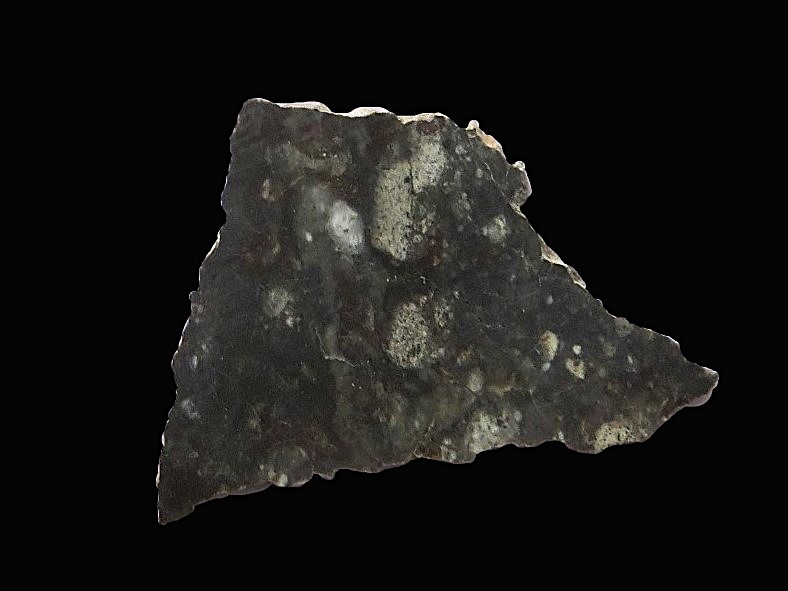Meteorite NWA 11182 is one of the most interesting lunar meteorites discovered on Earth. This rare fragment of our natural satellite is classified as a feldspar breccia, which means that it is made up of fragmented rocks that have been fused together due to impact. Its unique composition and varied hues make it not only scientifically valuable, but also highly sought after by meteorite collectors.
How did NWA 11182 get to Earth?
The origins of this meteorite go deep into the past, when an asteroid or comet struck the surface of the Moon. This collision released a large amount of lunar material, which was subsequently ejected into space. After a long journey through the Solar System, some of the debris eventually penetrated the Earth's atmosphere and landed on its surface. NWA 11182 was found in northwest Africa, suggesting that it is part of a larger meteor field scattered in that region.
Visual uniqueness and composition
Unlike many other lunar meteorites, which are predominantly a uniform grey or black colour, NWA 11182 is characterised by its varied hues. Its internal structure contains white feldspar clasts embedded in a dark grey matrix. In addition, there are areas of melt that have been formed as a result of strong impact shock. Most interesting, however, is the presence of brown, red and dark chestnut hues that make this meteorite not only scientifically valuable but also aesthetically exceptional.

Scientific significance
The study of meteorites such as NWA 11182 provides scientists with valuable information about the geology of the Moon. Lunar breccias contain rock fragments from different parts of the lunar surface and can reveal details about ancient impact events, the composition of the lunar crust and the processes that shaped our satellite. Analysis of these meteorites also helps in comparisons with samples brought back by the Apollo missions, thus increasing our knowledge of the evolution of the Moon.
Collecting value
Because of its unique colour and origin, NWA 11182 is extremely valuable among meteorite collectors. Many space rock enthusiasts seek it out not only for its scientific significance, but also for its visual beauty. It is often cut and polished to reveal its structure in all its glory. The small fragments are sold to collectors around the world and become the centerpiece of collections and exhibitions.
Why are we fascinated by lunar meteorites?
Lunar meteorites, such as NWA 11182, represent a fascinating link between our planet and its nearest cosmic neighbour. They allow us to literally hold a piece of the Moon in our hands and think about its ancient history, the impacts that have shaped its surface, and the future missions that humanity is planning to the Moon.
Thanks to these space messages, we have a unique opportunity to get to know our solar system better and prepare for the next steps in space explorations.
